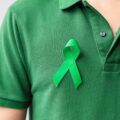Commentary
This original study demonstrates that serum angiopoietin-2 levels are increased in patients with NASH and correlate with liver steatosis, inflammation and hepatocyte ballooning, but not with liver fibrosis. Similar findings were observed with two murine models of NASH, namely mice fed a methionine and choline deficient diet and mice with neonatal injection of streptozotocin followed by 16 weeks of western diet. The main source of hepatic angiopoietin-2 was liver sinusoidal endothelial cells (LSECs). Inhibiting angiopoietin-2 levels using the angiopoietin-2/Tie2 receptor inhibiting peptibody L1-10 reduced hepatic angiogenesis and normalized vascular microarchitecture. These findings provide evidence for angiopoietin -2 inhibition as a therapeutic strategy to target pathological angiogenesis in NASH.
Previous Post
Endothelial fatty liver binding protein 4: a new targetable mediator in hepatocellular carcinoma related to metabolic syndrome.
Next Post
Cardio-Metabolic Disorders in Non-Alcoholic Fatty Liver Disease.


